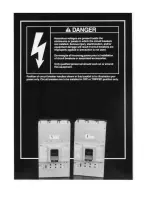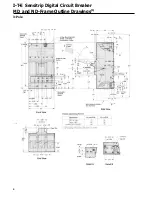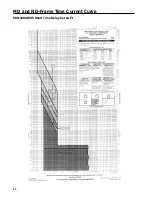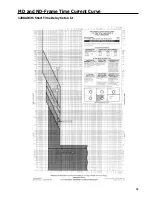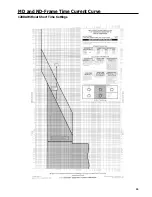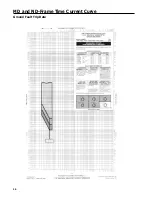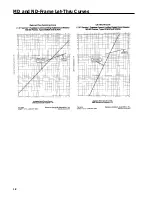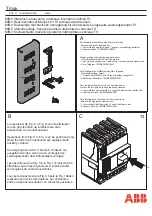
Information and Instructions
3
General
MD and ND-Frame Solid State Sensitrip style breakers of the
Sentron family, as shown on page 5, are for use in individual
enclosures, switchboards, and power distribution panel
boards. They are available both as 80% and 100% rated
devices and in three interruption ranges as shown in the table
below.
AAAA
AAAA
AAAA
AAAA
AAAA
AAAA
AAAA
AAAA
AAAA
AAAA
AAAA
AAAA
AAAA
AAAA
AAAA
AAAA
AAAA
AAAA
AAAA
AAAA
AAAA
A
A
A
AAAA
AAAA
AAAA
AAAA
AAAA
AAAA
AAAA
AAAA
AAAA
AAAA
AAAA
AAAA
A
A
A
AAAA
AAAA
AAAA
AA
AA
AA
AAAA
AAAA
AAAA
AA
AA
AA
AAAA
AAAA
AAAA
A
A
A
Symmetrical RMS Amperes UL Interruption Ratings
Interruption
Rating
Type
240V AC
480V AC
600V AC
Standard
SMD6-SND6
65kA
50kA
25kA
High Rating
SHMD6-SHND6
100kA
65kA
50kA
Current Limiting
SCMD6-SCND6
200kA
100kA*
65kA*
*Not current limiting at 480 v AC and 600 v AC
SCMD6 and SCND6 type circuit breakers are designed to
meet the requirement of current limiting as outlined in the
National Electric Code, article 240-11 (1) and UL 489(2)
standards. SCMD6 and SCND6 type circuit breakers are
fuseless and therefore eliminate the requirement of locating
and replacing blown fuses should a high current fault occur.
The common trip feature of the circuit breaker is completely
retained so that all poles of the circuit breaker open when
caused to trip due to an overcurrent condition.
Pressure wire connectors, suitable for use with aluminum or
copper wire are available for all MD and ND-Frame circuit
breakers. Rear connection studs or plug-in connector(3)
assemblies are also available. The latter mounting arrange-
ment permits the removal of the circuit breaker from its leads
without physically coming in contact with either the line or
load terminals. UL listed special features such as a shunt trip,
auxiliary and alarm switches and undervoltage trip devices
are available for internal mounting. The installation and/or
removal of these devices is to be accomplished by qualified
personnel only. Information concerning special features can
be found on page 58.
The chart below illustrates the functions available in all
Sentron Solid State Sensitrip circuit breakers.
AAAA
AAAA
AAAA
AAAA
AAAA
AAAA
AAAA
AAAA
AAAA
AAAA
AAAA
AAAA
AAAA
AAAA
AAAA
AAAA
AAAA
AAAA
AA
AA
AAAA
AAAA
AAAA
A
A
A
AAAA
AAAA
AAAA
AAAA
AAAA
AAAA
AAAA
AAAA
AAAA
Adjustments
Breaker Suffix Letters
A
AG
ANT
ANGT
Long Time Adj.
Current Setting
✓
✓
✓
✓
Adj.
Long Time Delay
✓
✓
✓
✓
Adj.
Instantaneous
Setting
✓
✓
✓
✓
Adj.
Short Time Pick Up
✓
✓
Adj.
Short Time Delay
✓
✓
Adj.
Short Time I²t
Pick Up
✓
✓
Adj.
Ground Fault
Pick Up
✓
✓
Adj.
Ground Fault Delay
✓
✓
General Information
Circuit Breaker Operation
With the mechanism latched and the contacts open, the
operating handle will be in the OFF position. Moving the
handle to the ON position closes the contacts and establishes
a circuit through the circuit breaker. Under overload or short
circuit conditions sufficient to trip or open the breaker auto-
matically, the operating handle moves to a position between
ON and OFF To relatch the circuit breaker after automatic
operation, move the operating handle to the extreme OFF
position. The circuit breaker is now ready for reclosing.
The overcenter toggle mechanism is trip free of the operating
handle. The circuit breaker therefore, cannot be held closed
by means of the handle should a tripping condition exist. After
automatic operation, the handle will assume an intermediate
position between ON and OFF, thus displaying a clear
indication of tripping.
Maintenance
Experience has shown that properly applied molded case
circuit breakers normally do not require maintenance. How-
ever, some industrial users may choose to establish an
inspection and maintenance procedure to be carried out on
a regular basis. For detailed information, consult applicable
NEMA publications or your local Siemens sales office.
(1) National Electrical Code (240-11) A current limiting overcurrent protective device, which,
when interrupting currents in its current limiting range, will reduce the current flowing in the
faulted circuit to a magnitude substantially less than that obtainable in the same circuit, if the
device were replaced with a solid conductor having comparable impedance.
(2) Underwriters Laboratories (UL 489, Par 2.5) A circuit breaker that does not employ a fusible
element and that when operating within its current limiting range, limits the let-through 12t to
a value less than the I2t of a 1/2 cycle wave of the symmetrical prospective current.
(3) Plug-in assembly not available for ND-Frame
Summary of Contents for I-T-E Sensitrip MD Series
Page 2: ......
Page 6: ...4 I T E Sensitrip Digital Circuit Breaker MD and ND Frame Outline Drawings 1 3 Pole ...
Page 8: ...6 MD and ND Frame Trip Adjustments ...
Page 12: ...10 MD and ND Frame Time Current Curve 600 1000A With Short Time Delay Set on Fixed Time ...
Page 13: ...MD and ND Frame Time Current Curve 11 1200A With Short Time Delay Set on Fixed Time ...
Page 14: ...12 MD and ND Frame Time Current Curve 600 100A With Short Time Delay Set on I2 t ...
Page 15: ...MD and ND Frame Time Current Curve 13 1200A With Short Time Delay Set on I2 t ...
Page 16: ...14 MD and ND Frame Time Current Curve 600 100A Without Short Time Settings ...
Page 17: ...MD and ND Frame Time Current Curve 15 1200A Without Short Time Settings ...
Page 18: ...16 MD and ND Frame Time Current Curve Ground Fault Trip Data ...
Page 19: ...MD and ND Frame Time Current Curve 17 Example ...
Page 20: ...18 MD and ND Frame Let Thru Curves ...
Page 31: ...Installation Diagrams 29 ...
Page 35: ...I T E Mechanical Interlock M15404 33 Figure 7 ...
Page 41: ...Installation Diagrams 39 ...
Page 49: ...Installation Diagrams 47 ...
Page 50: ...48 I T E Panelboard Connecting Straps 1 ...
Page 53: ...Installation Diagrams 51 ...


